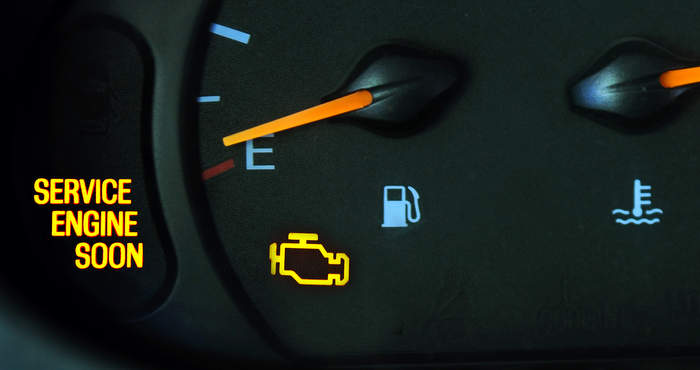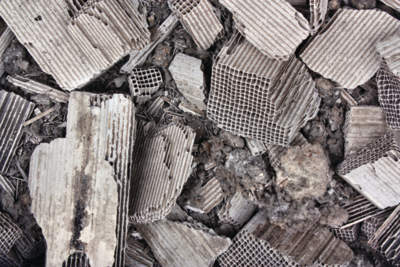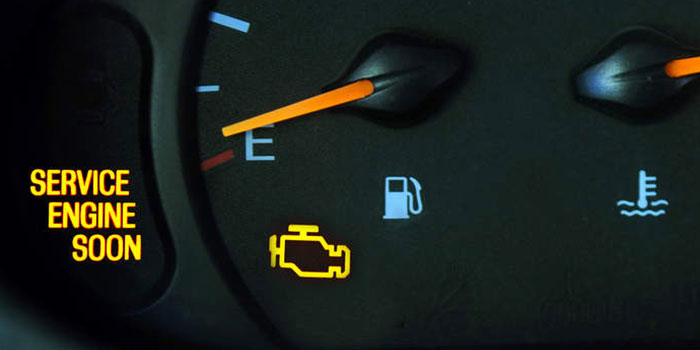
A moral dilemma that many shops encounter on a regular basis: A good customer comes in with the engine light ablaze. Running the usual diagnostics, you encounter a catalytic converter efficiency code, a slow to respond oxygen sensor or some proprietary fuel trim code. Other than the light, the customer has not noticed any other running problems.
The customer has been loyal to your shop for several years and doesn’t hesitate to perform any recommended services. The dilemma is to either clear the codes and hope the light doesn’t come back on, or to go deeper and resolve the problem.
Even if the converter is operating below 95% efficiency or the oxygen sensor is bad, the chances of the light coming right back on are slim. If you clear the code, the light might stay off for a while until the system goes through two readiness cycles. This might take a couple of days or a couple of weeks. But, no good deed goes unpunished because the customer will be back and your quick fix will be forgotten.
Understanding Codes
OBDII systems with faulty catalytic converters will normally store a diagnostic trouble code (DTC) when the converter begins to fail. The OBDII converters use an upstream and downstream oxygen sensor to measure the differences in oxygen content between the inlet and outlet gases. In virtually every case, the OBDII system will detect a converter failure long before it can be detected using shop equipment.
Consequently, before replacing an OBDII converter, always check the diagnostic memory for converter-related DTCs, such as a P0420. Also, make sure that the vehicle has exceeded its emissions warranty. If not, the vehicle must be referred to the closest dealership for warranty services.
OBDII monitors include the catalyst heater, catalytic converter efficiency, secondary AIR, O2 sensor heaters, EGR system, PCV system, thermostat and A/C system (where used). These are all “non-continuous” monitors and are not set until certain driving conditions have been met. The converter efficiency monitor, in particular, is a hard one to set and may require driving the vehicle at various speeds and loads so the OBDII system can get a good look at what’s going on.
The converter monitor compares the reading of the upstream and downstream O2 sensors to see if the converter is working efficiently. If you hook up a scope to both O2 sensors and compare the waveforms, the upstream O2 sensor should be fluctuating up and down from rich to lean with voltage readings going from 0.6 or more volts down to 0.3 volts or less. The downstream O2 sensor, on the other hand, should remain relatively flat. If the downstream O2 sensor is fluctuating in sync with the upstream O2 sensor, it means the converter isn’t doing much.
 Most converters start out at about 99% efficiency when new and quickly taper off to about 95% efficiency after 4,000 miles or so of driving. As long as efficiency doesn’t drop off more than a few percentage points, the converter will do a good job of cleaning up the exhaust, but if efficiency drops much below 92%, the MIL lamp will likely turn on.
Most converters start out at about 99% efficiency when new and quickly taper off to about 95% efficiency after 4,000 miles or so of driving. As long as efficiency doesn’t drop off more than a few percentage points, the converter will do a good job of cleaning up the exhaust, but if efficiency drops much below 92%, the MIL lamp will likely turn on.
With vehicles that meet the tougher LEV (Low Emission Vehicle) requirements, there’s even less leeway. A drop in converter efficiency of only 3% can cause emissions to exceed federal limits by 150%. The LEV standard allows only 0.225 grams per mile of hydrocarbons, which is almost nothing.
If you have a vehicle with a converter efficiency code, don’t assume the converter is bad and replace it until you’ve checked for air leaks at the exhaust manifold, head pipe and converter. You should also hook up a scope and compare the upstream and downstream O2 sensor readings to verify both are working properly.
One thing to keep in mind about non-continuous OBDII monitors is that they may not catch a problem until the vehicle has been driven several times and conditions are right to detect the fault. Consequently, any time you’re troubleshooting an OBDII problem, use a scan tool that can tell you if all the monitor readiness flags have been set. If one or more monitors are not ready, the vehicle will have to be driven under varying speeds and loads until all the monitors are set. Then, and only then, will you get an accurate diagnosis from OBDII.
 Mechanical Analysis
Mechanical Analysis
There are three basic types of converters: two-way converters that only handle HC and CO, three-way converters that handle HC, CO and NOX, and three-way plus oxygen converters that have an extra pipe connection for injecting air directly into the converter.
A single misfiring spark plug or a leaky exhaust valve can dump enough unburned fuel into the exhaust to overheat and damage the converter. This is why most converters fail.
When the converter gets too hot, it can literally melt the ceramic honeycomb or pellets that hold the catalyst. This, in turn, can cause a partial or complete blockage in the exhaust system that chokes engine performance and may even cause the engine to stall.
Replacing the converter will eliminate the blockage, but unless the underlying cause of the failure is diagnosed and repaired, the replacement converter will likely suffer the same fate.
Replacement converters must also be EPA-certified, meet minimum performance requirements and carry a two-year, 24,000-mile emissions warranty.
New converters are covered under the vehicle manufacturer’s emissions warranty for eight years or 100,000 miles. What’s more, there’s no rule that says a defective converter has to be replaced by a vehicle dealer.
Courtesy Brake & Front End.














